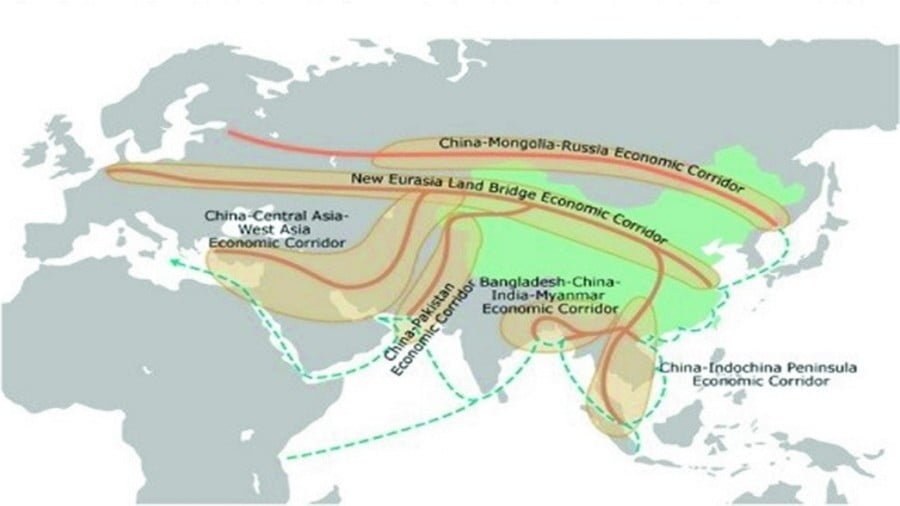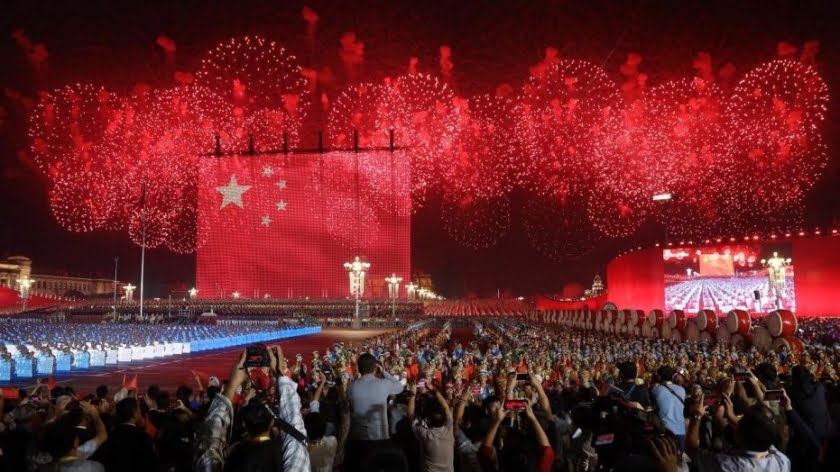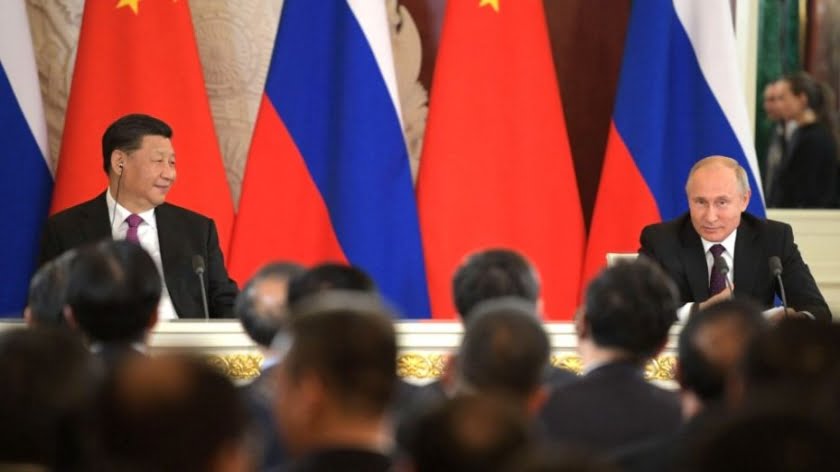The Beginning of the ‘US-China Dialogue’ in a New Format
On June 21-23 this year, the first U.S.-China Diplomatic and Security Dialogue (D&SD) was held in Washington. This kind of a ‘dialogues’ between the two leading world powers at the ministerial level began to be held (alternately in the territories of the two partners) in the second half of the last decade, and since 2009, they have been annual in nature.
All that has happened is that the name of the already-established political platform, which is extremely important in the emerging global game, has simply changed. The changes in the notation reflect the features of the transformation of the platform, at the center of which is the factor of the transformation of the People’s Republic of China into the second most powerful world power. At the same time, China is inevitably getting involved in a complex relationship with the recent single global leader, United States. As soon as at the turn of the 1990s, US think tanks formed the opinion that the main strategic opponent of the United States in the coming century would be China, the idea of creating an interactive platform for discussing the problems of strategic partnership with this far-eastern giant was becoming increasingly urgent.
Over the past decade, the volume of bilateral trade between the two countries has increased by an order of magnitude. This process was accompanied by the emergence and further development of serious problems. Therefore, the dialogue has turned into a “strategic and economic” one.
Finally, at the last bilateral summit held in April with incumbent US President Donald Trump in Florida, the leaders of both countries came to the conclusion that the system of bilateral relations and the situation in the world are extremely complex and serious. Therefore, the so far single dialogue had to be divided into several thematic sections:
- the above D&SD;
- the Comprehensive Economic Dialogue;
- the Law Enforcement and Cyber Strategic Dialogue;
- the Social and People-to-People Dialogue.
The D&SD opened a series of new “dialogues”. The theme for the series predetermined the composition of the “teams” of the participants. The US was represented by Secretary of State Rex W. Tillerson and Secretary of Defense James Mattis, while China by Member of the State Council of the People’s Republic of China and Foreign Policy Curator Yang Jiechi, as well as Member of the Central Military Council (CIC), and Chief of Joint Staff Fang Fenghui.
It seems useful to review briefly some recent acts in the formation of the general political background in which the Washington meeting was held.
Among them, of course, is a sharp aggravation in recent months of the situation on the Korean peninsula in connection with the further development of the DPRK Nuclear Weapons Program. And as far as the very problem of the “denuclearization” of the Korean peninsula and the particularities of its solution are concerned, significant differences exist between Washington and Beijing.
It was this problem that Acting Deputy Secretary of State for East Asia and the Pacific Susan Thornton first addressed at a press conference held on the eve of the D&SD.
Among other topics she noted, the situation in South-East Asia, where the US-Chinese competition has in recent years acquired the character of an open confrontation, attracted the most attention. Once again, this rivalry apparently manifested itself during the recent Shangri-La Dialogue that was held in Singapore.
The fact that the process of finding any compromise in Southeast Asia will be extremely difficult is evidenced by the latest signals about the unchanged position of the People’s Republic of China regarding its territorial claims on the South China Sea. Just on the day of the launch of the D&SD, it was announced that the Oceanographic Institute of the Academy of Sciences of the People’s Republic of China was launching a program for “digitizing data on islands and reefs” in the South China Sea. And the political underpinning of this action is underlined in China itself.
Another alarming signal was the cancellation of the planned visit to Vietnam (“due to operational reasons”) of Fan Changlong, a general in the People’s Liberation Army (PLA) of the People’s Republic of China and Vice Chairman of the Central Military Commission. Vietnam, we recall, is today almost the main (of the “local”) opponent of the People’s Republic of China in Southeast Asia, and its foreign policy rings of noticeable pro-US stances.
As we have repeatedly noted, both main subregions in which the US-China political competition is unfolding (the Korean Peninsula and Southeast Asia) are geographically connected by Taiwan, the struggle for influence on which is not so obvious, but in fact, no less significant.
Recognizing in words the concept critically important for the People’s Republic of China about “one China”, Washington in practice operates in accordance with its own law, effectively excluding the possibility for Beijing to use its forces to solve the “Taiwan Problem”. In March, the same Thornton confirmed this position of the US and most recently, Defense Minister James Mattis, also reiterated this during the Shangri-La Dialogue. At the above-mentioned press conference, Mr. Thornton pointed to the inclusion of the “Taiwan Problem” in the agenda of the upcoming D&SD.
At the conclusion of this “dialogue”, a meeting of the members of the Chinese delegation with President Donald Trump took place, during which Yang said China was ready to “coordinate with the US” efforts to “denuclearize” the Korean peninsula. The terms used here are noteworthy, as the Chinese guest pointed to the Korean peninsula as a whole as the object of “denuclearization”, and not only the DPRK, as Washington does.
Donald Trump’s assessment of the efforts of the leadership of the People’s Republic of China to solve the problem of the North Korean Nuclear Missile Program is also noteworthy. The meaning of his speech on the day of the beginning of work of the D&SD boiled down to the passage that “China is trying, but is not appearing to be working in its full capacity”.
Commenting on the results of the first U.S.-China Diplomatic and Security Dialogue, the state news agency of the People’s Republic of China, Xinhua, identifies three points.
First, an agreement was reached to hold bilateral negotiations more frequently, including at the highest level. In particular, meetings between Xi Jinping with D. Trump have already been scheduled to take place both at the forthcoming G-20 summit, and during the official visit of the US President to the People’s Republic of China, which is in turn scheduled for the end of 2017.
Secondly, it was stated that it was necessary to develop “constructive, pragmatic and effective” cooperation between the two countries through their respective military departments.
Thirdly, both sides agreed to “coordinate” their efforts on the issue of nuclear weapons on the Korean Peninsula, meaning the “full implementation” of the relevant resolutions of the UN Security Council.
We, in turn, allow ourselves to note that, apparently, during the first US-Chinese D&SD, they managed to reach certain agreements regarding the problems of a momentary and tactical plan, which is another aggravation of the situation on the Korean peninsula.
However, in the context of the overall complexity of the global game (including its main component, which is the US-China relationship), the prospect of any deep coordination of the positions of both major players even on this particular issue is questionable.
In this regard, it is important to note the invisible presence at the negotiating table in Washington of other important world players like Russia, Japan, Germany (EU) and India. This, undoubtedly, limits the freedom of resolution of both direct negotiators.
In this, by the way, the above-mentioned sharp complication of the current stage of the global political game in many respects resembles the period of the (“bipolar”) Cold War.
In particular, during the Washington talks, prospects for the development of relations between the People’s Republic of China and the EU “in the Trump era” were discussed in the Chinese Global Times. The New Eastern Outlook has repeatedly noted the growing importance for the People’s Republic of China to develop relations with a conditional “Europe” and the formation in this regard of one of the global strategic triangles comprising of the US, China, EU.
The very fact that the role of the above-mentioned “other player” is increasing makes a ghostly prospect of realizing (appearing a few years ago) the concept of the formation of a bilateral US-Chinese construct for global governance. However, it seems extremely doubtful that such ideas in general are today on the agenda of the relations between these two leading world powers.
The question of how significant the presence of one of these “other players” at the global gaming table is will be sufficiently answered by the results of the weekly trip to the US of Indian Prime Minister Narendra Modi, which began immediately after the completion of the US-Chinese D&SD.
By Vladimir Terekhov
Source: New Eastern Outlook







